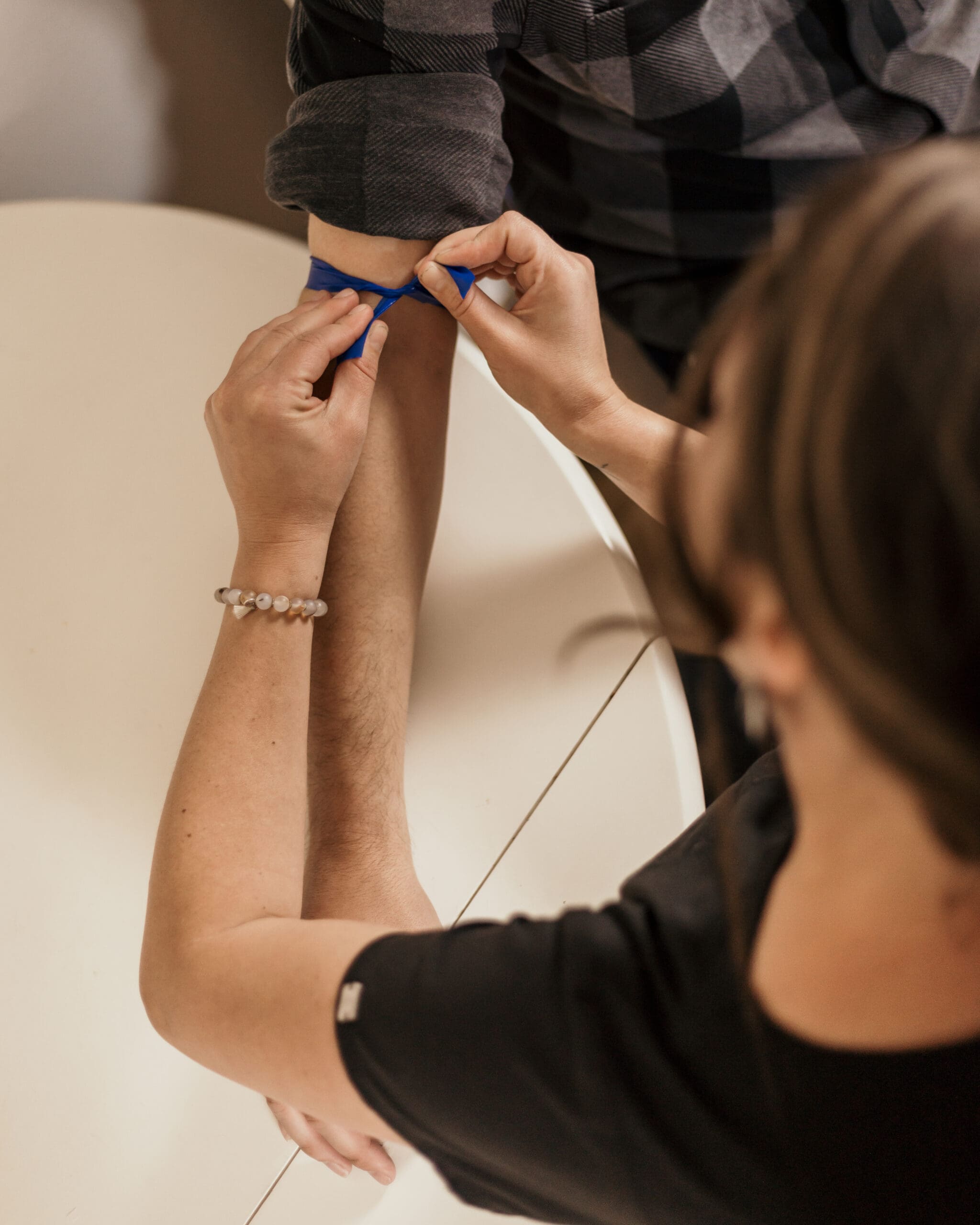Health Anxiety: How to Overcome it (Part 2)
Episode 30: Spotify | Apple Podcasts | YouTube
View transcript on Buzzsprout
If you’ve been stuck in a spiral of Googling symptoms, fearing the worst, and constantly questioning what’s happening in your body, you’re not alone—and you’re not without options. This episode breaks down the four key approaches needed to truly heal health anxiety. Whether you’ve tried talk therapy, avoided appointments, or are desperate for a new way forward, this blog outlines a whole-body approach that actually works.
What We Cover in This Episode
- Why worry is evolutionary (and how your brain’s negativity bias plays a role)
- The four-part framework for healing health anxiety
- Why cognitive therapy alone often isn’t enough
- How faulty interoception misinterprets symptoms
- What it takes to truly rewire your nervous system
The Power of Perception: How Health Anxiety Warps Reality
Our brains are designed to detect patterns and protect us from harm. That’s why we notice more of what we’re already focused on—especially if that focus is health-related fear. If you’re constantly scanning for symptoms or danger, it’s not a character flaw. It’s your nervous system trying to keep you alive.
But just like noticing green objects because you were told to look for green, your mind starts filtering out everything that signals safety or normalcy. That’s the essence of the negativity bias. And health anxiety feeds on it.
Defining Health Anxiety (Again)
Health anxiety, at its core, is an overestimation of threat (“This symptom means something terrible”) paired with an underestimation of your ability to handle it (“I won’t survive this”). The result? A constant state of alert, even when you’re physically safe.
You may find yourself spiraling over sensations others barely notice. But your nervous system doesn’t care if it’s a stubbed toe or something bigger—it reacts based on your history, your regulation tools, and your filters.
The 4-Part Framework for Working Through Health Anxiety
Healing requires more than logic. It takes a layered, whole-person approach:
1. Thought Work (CBT)
Cognitive Behavioral Therapy (CBT) helps you identify and shift unhelpful thoughts and behaviors. It’s helpful, but often incomplete. Without somatic safety, your body won’t believe the new narrative. Still, CBT can:
- Reduce catastrophic thinking
- Help you detach from unhelpful thoughts
- Decrease reassurance-seeking behaviors
2. Cultivating Interoception
Interoception is your ability to accurately interpret internal signals. When it’s distorted, normal sensations feel dangerous. Cultivating accurate interoception helps you say, “This is anxiety, not danger.” That starts with:
- Psychoeducation (like this podcast!)
- Learning how your stress response actually works
- Mapping your body’s patterns of activation and regulation
3. Somatic Nervous System Work
You can’t think your way to safety. You have to feel it. Somatic tools help your body recalibrate out of fight-or-flight and into safety. That means:
- Befriending your body’s cues (“I’m tired because…”)
- Meeting needs quickly (“I’m hungry, so I eat”)
- Practicing mindfulness and sensory awareness
This is the heart of what we teach inside the Regulated Living Membership and Restore coaching. These tools don’t just reduce anxiety—they change how your system perceives and responds to stress.
4. Co-Regulation
You don’t have to do this alone. Regulating in relationship with others is one of the most effective ways to rewire your nervous system. This could mean:
- Finding medical providers who help you feel seen and safe
- Bookending triggering events with supportive conversations
- Letting yourself be held emotionally by others
Even Amanda’s shift from dental panic to calm was rooted in co-regulation—a safe provider, a compassionate environment, a sense of being cared for.
Three Tangible Takeaways
- Health anxiety distorts perception through a negativity bias. Learn how your system filters for fear—and how you can retrain it to notice safety instead.
- You need both top-down (thought work) and bottom-up (somatic) tools. Therapy alone may not help unless your nervous system also feels safe.
- Awareness isn’t enough—implementation matters. Pick one area to begin: body awareness, nervous system regulation, or support systems. Then take one small, concrete step.
Looking for more personalized support?
- Book a FREE discovery call for RESTORE, our 1:1 anxiety & depression coaching program (HSA/FSA eligible & includes comprehensive bloodwork)
- Join me inside the Regulated Living Membership, a mental health membership and nervous system healing space (sliding scale pricing available)
- Join my Release Class – Monthly guided nervous system regulation class
- Order my book, Healing Through the Vagus Nerve today!
- Download free resources here
*Want me to talk about something specific on the podcast? Let me know HERE.
Disclaimer: This article is for informational purposes only and is not a substitute for professional medical advice, diagnosis, or treatment. Always seek the advice of your physician or qualified mental health provider with any questions you may have regarding a medical condition.

Leave a Reply Cancel reply
A mental health newsletter that feels like a deep breath: simple, grounding, and here to remind you that healing is possible.
The Weekly Rewire
Navigate
Regulated Living provides neuroscience-backed mental health coaching to help you regulate your nervous system and reclaim your life from anxiety and depression.
Heal
Learn
Paragraph